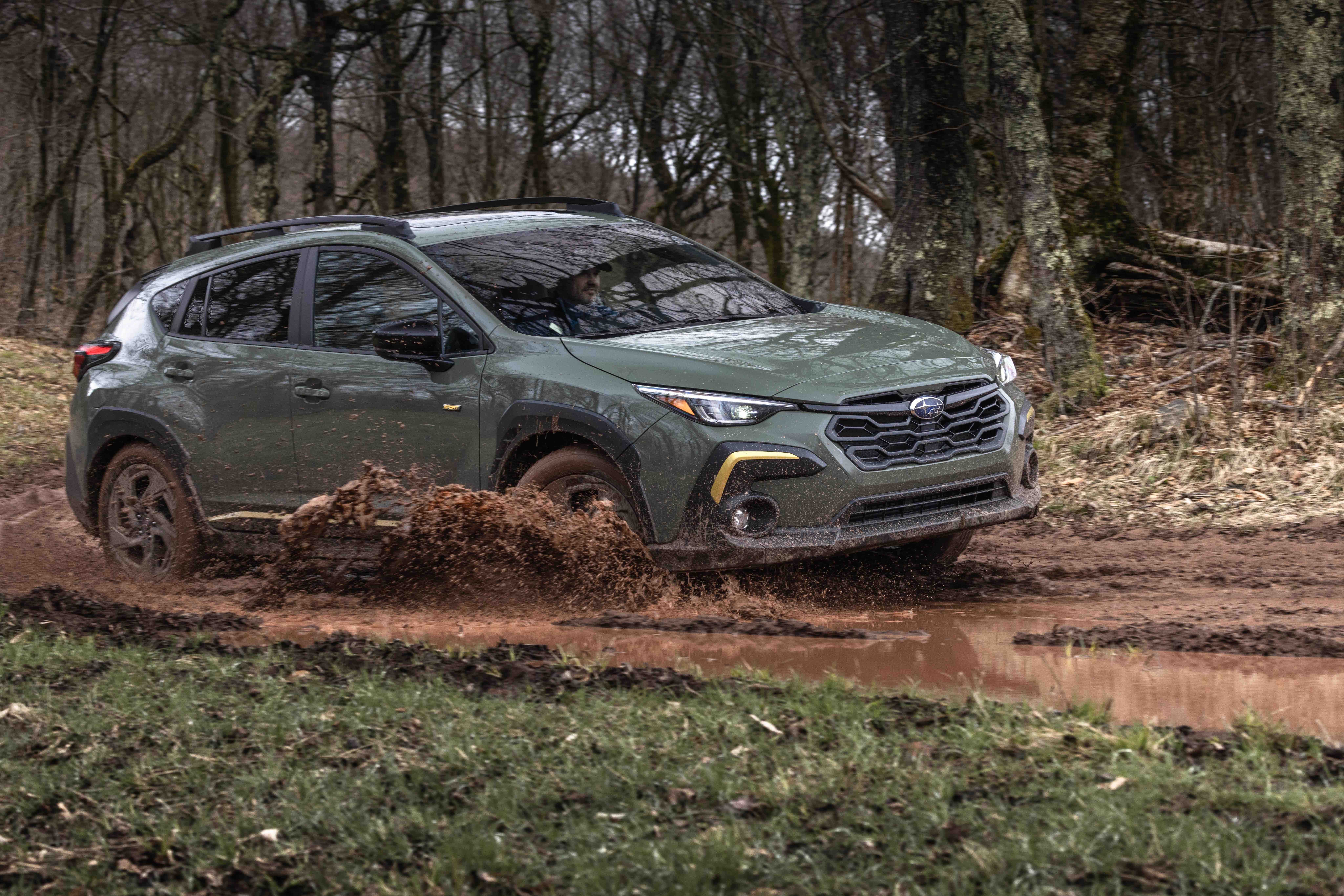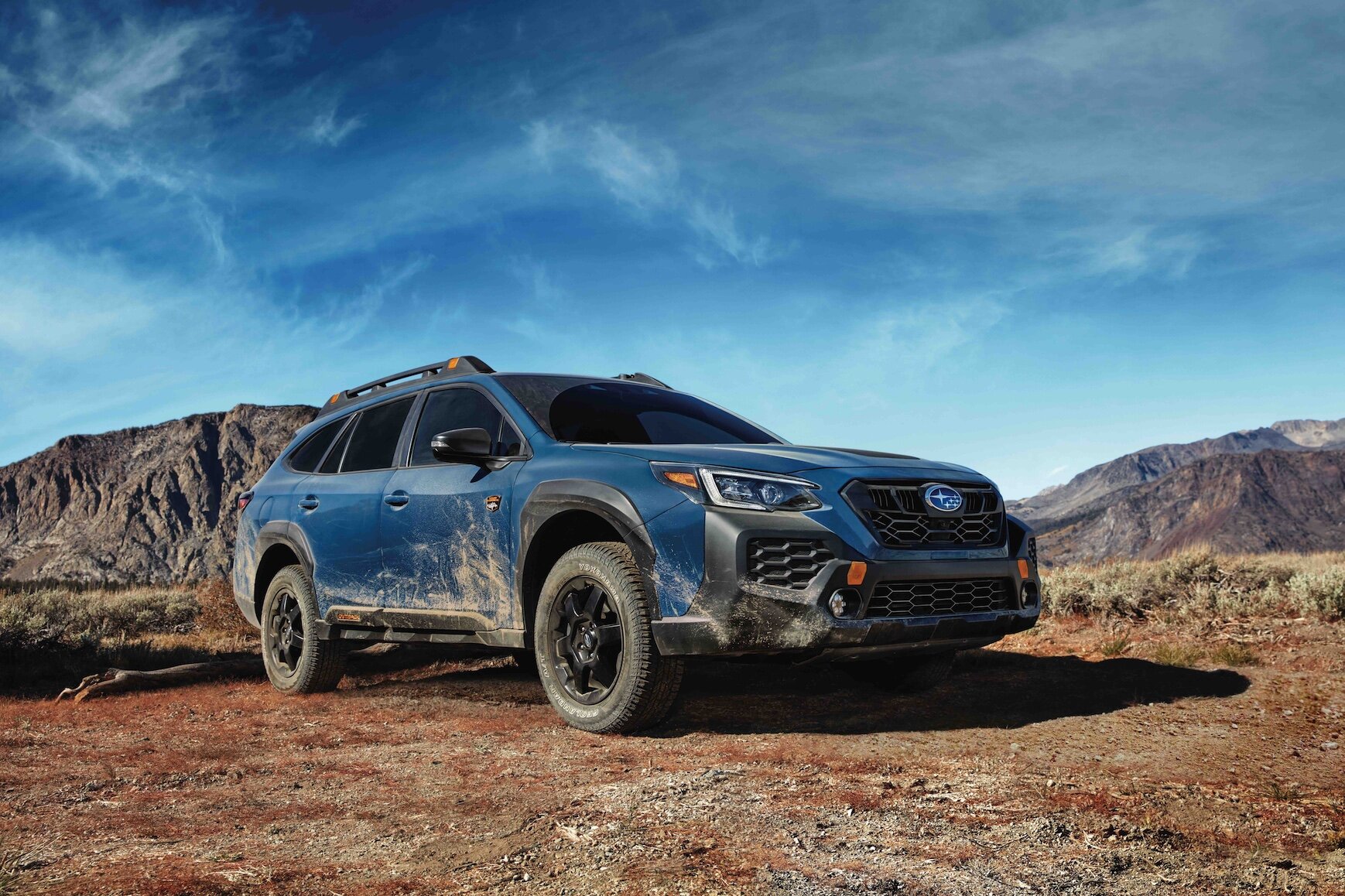The Familiar Face, Now Sharper: First Impressions of the 2025 Crosstrek
It’s a brisk Michigan morning when the 2025 Subaru Crosstrek arrives in my driveway, its cool-blue paint glinting under the half-hearted April sun. The Crosstrek’s design has always leaned more rugged than refined, but for 2025, Subaru gives it a sharper jawline and sleeker LED accents. The brand’s signature hexagonal grille is a touch bolder, while wheel arches still hint at real-world adventure. Parked next to a Toyota Corolla Cross and Honda HR-V, the Crosstrek looks purpose-built—less city-crossover, more trailhead companion. Subaru’s personality shows up in those subtle matte-black claddings and modest ground clearance (8.7 inches remains standard across trims). Not everyone will love the quasi-off-road vibe, but it’s honest. You won’t mistake it for a rental-spec SUV.
Engines and Underpinnings: What’s Under That Boxer Hood?
Subaru keeps things familiar under the hood—maybe too familiar for some tastes. The 2025 Crosstrek continues with two engine options: a 2.0-liter flat-four (152 horsepower, 145 lb-ft) for base and Premium trims, and a 2.5-liter flat-four (182 horsepower, 178 lb-ft) in the Sport and Limited. Both pair with a CVT automatic transmission; there’s no manual this year, which is a loss for diehard enthusiasts but barely a blip for most buyers.
All-wheel drive is standard across the board—no surprise from Subaru—along with X-Mode for loose surfaces. The EPA estimates haven’t shifted much: expect around 27 mpg city and 34 mpg highway for the smaller engine, slightly less for the 2.5L. That puts the Crosstrek mid-pack among small SUVs; slightly better than a Jeep Compass, not as frugal as a Toyota Corolla Cross Hybrid.
Behind the Wheel: Real Roads, Real Sensations
Slide into the driver’s seat and you’re greeted by chunky controls that operate with satisfying clicks—climate dials feel particularly robust. The seating position is upright and confidence-inspiring; visibility is superb thanks to slim pillars and high glass all around. On startup, there’s the characteristic thrum of the boxer engine—a subdued burble that disappears once underway.
Out on suburban pavement, the Crosstrek feels composed if not quick. The 2.0L engine is adequate around town but can sound strained merging onto fast-moving highways; the 2.5L offers noticeably better punch without dramatic penalty at the pump. Steering is light but direct—a trait I’ve come to appreciate after years in Detroit winter traffic where nimble reactions matter more than heavy-handed feedback.
Ride quality remains one of this crossover’s strong suits: bumps vanish with little drama thanks to well-tuned suspension travel and relatively tall tires. There’s some body roll if you toss it into curves (a Mazda CX-30 feels sportier), but on gravel or pockmarked city streets, Crosstrek shines with quiet composure. Wind noise is present at 70 mph but less intrusive than in a Ford Bronco Sport.
Inside the Cabin: Where Buttons Meet Big Screens
The interior doesn’t try to dazzle with flash; instead, it doubles down on ergonomic logic. Subaru’s latest Starlink infotainment system sits atop an 11.6-inch vertical touchscreen on most trims (base models get dual 7-inch displays). Response times are quick enough, but I found myself relying on physical knobs for volume and temperature—a relief compared to some rivals’ all-glass interfaces.
Materials are solid if not luxurious: soft-touch dash surfaces pair with durable cloth or optional synthetic leather seats (no animal hides here). There’s ample room up front for tall drivers like myself (6’2” with boots on), while rear legroom bests most competitors in the class. Cargo space remains competitive at just over 20 cubic feet behind the seats—plenty for groceries or muddy hiking gear—but falls short of segment leaders like the Honda HR-V when seats are folded down.
Small touches stand out: deep cupholders that actually fit an American coffee mug, tactile window switches, rear seatbacks that fold nearly flat without fuss. In daily use, these details matter more than stitched dashboards or faux wood trim.
Tech & Safety: Subaru's Conservative Progress
Every Crosstrek comes standard with Subaru’s EyeSight driver-assist suite—adaptive cruise control, lane-keep assist, pre-collision braking—and it works smoothly in real-world conditions without being overly intrusive. Higher trims add blind-spot monitoring and rear cross-traffic alert; wireless Apple CarPlay/Android Auto is now standard across all models.
The infotainment interface is logical but lacks some polish compared to Hyundai or Kia systems; voice recognition can be hit-or-miss depending on road noise levels or your Michigan accent (I tested both). USB-C ports are finally present front and rear—a nod to evolving tech needs.
Running Costs: What Does Life With a Crosstrek Look Like?
Subaru ownership has always meant reasonable costs and long-term durability—and there’s little reason to think that will change here. Scheduled maintenance intervals remain straightforward; oil changes are affordable thanks to non-turbo engines with proven reliability records. Insurance rates tend to be moderate due to excellent crash-test scores (official IIHS results for the 2025 model weren’t published at time of writing, but previous years were Top Safety Picks).
Resale values hold strong against mainstream rivals—better than Jeep Compass or Chevy Trailblazer, comparable to Toyota Corolla Cross—thanks in part to Subaru’s brand loyalty and reputation for ruggedness.
The Competition: Where Does Crosstrek Land?
The subcompact SUV class grows more crowded each year; yet few manage to blend true all-weather capability with real comfort like the Crosstrek does. Toyota’s Corolla Cross offers hybrid efficiency but lacks standard AWD on lower trims; Mazda CX-30 feels sportier inside and out but offers less ground clearance and smaller cargo space; Honda HR-V boasts more interior room but doesn’t match Subaru off-pavement.
If you need actual off-road chops in this price range, only Ford Bronco Sport comes close—but it costs more comparably equipped and rides rougher day-to-day.
The Gritty Bits: Pros, Cons & Everyday Surprises
Pros:
- Standard all-wheel drive with impressive ground clearance
- Smooth ride quality over rough roads
- User-friendly controls and logical cabin layout
- Strong resale value and safety reputation
Cons:
- Bland acceleration from base engine
- Cargo space trails some key rivals when rear seats folded
- No manual transmission option
I’ll add one personal note: after a week of errand runs, dog park visits, and an ill-advised shortcut through muddy construction detours, there wasn’t much that fazed this little crossover. It shrugged off spring potholes without complaint—and kept my coffee upright every time.
The Final Word: A Crossover Built for Real Life
If you measure your car by lap times or chrome count, look elsewhere; there are flashier crossovers for less money out there. But if you value capability over curb appeal—and want something that’ll handle Midwestern winters or summer trailheads without breaking sweat—the 2025 Subaru Crosstrek remains one of the most well-rounded picks in its class. It won’t thrill every driver at every stoplight—but it almost never lets you down when it counts.
- Michael Turner


